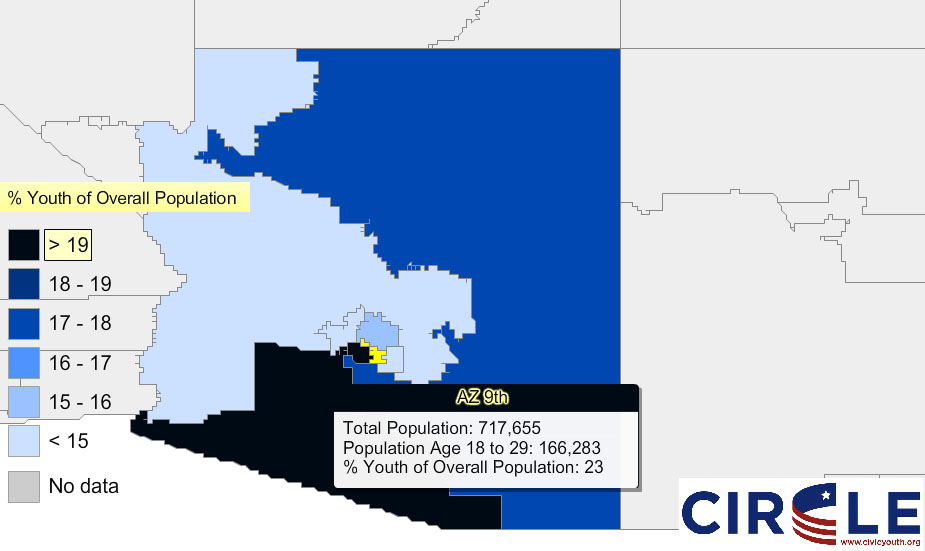The Youth Vote in 2014: Races to Watch
Young people’s political opinions and decisions differ depending on their background, education, and geographic region; the competitiveness of campaigns; and other factors. Ignoring those differences and treating “youth” as a monolithic group is misleading and counterproductive.
We recently created a new tool to access and visualize some of the most detailed available data about youth across the country: an interactive map of election-related indicators for every congressional district in the United States.
At the national level, the map helps us better understand where young people are concentrated, and provides some insight about the political contexts that may affect their political engagement. The map can also be used to suggest which competitive House races are worth tracking to see how young people may impact the elections and whether candidates are reaching out to youth. While these are not electoral predictions, we share the list of districts to watch as an example of how practitioners may use our map to inform their work.
We were guided by past research about turn out in midterms over time at the national and state level, turnout in competitive areas, and propensity to target college students. We looked for districts that were:
« Currently deemed in play/competitive in 2014 by at least three out of the four ratings/analyses considered
« Home to many young people (e.g. in the top 20 districts by youth population share)
« Sensitive to youth voting, meaning that the number of youth who voted in 2010 was close to the margin of victory in 2010 and 2012
« Relatively open to challengers. (If an incumbent is running, it is not a long-time incumbent.)
« Home to several higher education institutions.
Based on our analysis of districts that fit several of these criteria, here are four races to watch in 2014:
1) Iowa 3rd
Representative Tom Latham (R) is retiring after twenty years in the House, leaving a competitive race that multiple analysts consider a toss-up. The Iowa 3rd includes many college campuses, and in the 2010 midterm young people cast 13% of votes in the district—more than twice the national average.
2) Arizona 1st
Democratic Representative Ann Kirkpatrick’s two terms in the House bookended a loss in 2010, and many analysts see this race as a toss-up. Each of the last two House races was decided by less than 14,000 votes. The overall number of youth in the district who cast a ballot in the most recent 2010 midterm was over 18,000.
3) Arizona 9th
Representative Kyrsten Sinema (D) is defending her seat in this relatively new district that will hold just its second election. Sinema won the seat in 2012 by 10,000 votes, and the race is considered close again this year. Young people make up almost a quarter of the resident population in the Arizona 9th, and in the last midterm election over 27,000 youth cast a ballot. There are also three large college campuses (and a high number of higher education institutions) in the district.
4) New York 23rd
Representative Tom Reed (R) is defending his seat in a district where nearly one fifth of residents are between the ages of 18-29, and which houses many institutions of higher education. Reed won reelection in 2012 by less than 4% of votes cast.
Explore the data
You can access our interactive map HERE. We look forward to seeing if and how candidates in these districts look to engage young people ahead of the 2014 midterm elections. We also encourage practitioners across the country to explore our map and figure out how this data can inform your work. Feel free to share what you did with us!
You can also check out our other interactive data maps, which chart state civic education policy and state-level youth voting data.






